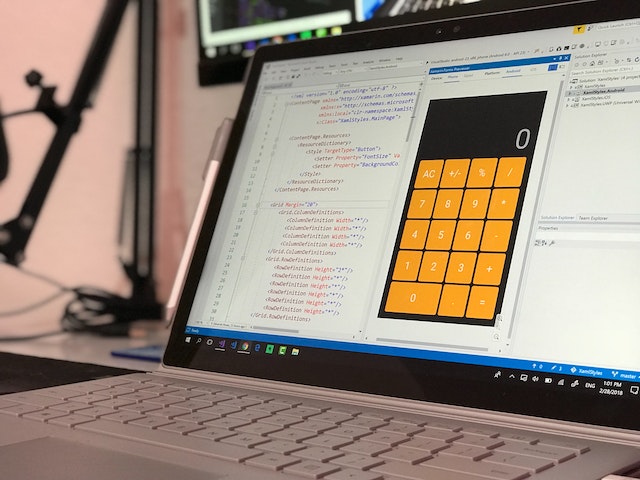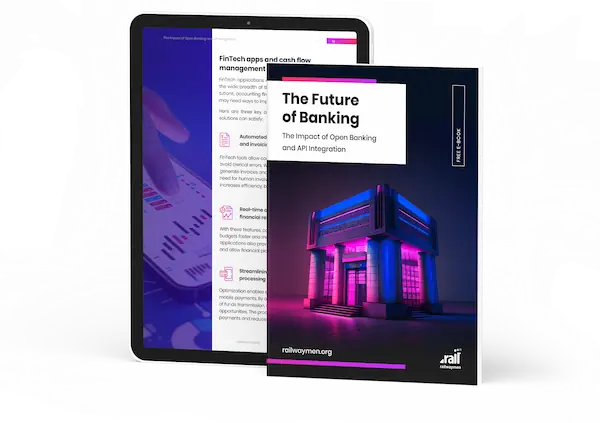Managing budgets in real time can be a daunting task, particularly for businesses and financial teams that operate with multiple accounts, currencies, and permissions. This article will provide a comprehensive guide to the tools and software available to maximize financial efficiency and successfully manage budgets in real-time. We'll discuss the benefits of budget management, address common challenges and risks, outline best practices for budgeting, and explore the impact of Optical Character Recognition (OCR) and Artificial Intelligence (AI) on budgeting. The focus will also be on the various permission levels and types of budgeting software available and their associated costs, capabilities, and features.
Table of Contents:
1. What is Real-Time Budget Management?
2. Why is Budget Management important in the FinTech Industry?
3. Benefits of Real-Time Budget Management for users of FinTech Platforms.
4. Common Challenges of Real-Time Budget Management.
5. Risks of Mismanagement of Budgets.
6. Best Practices for Real-Time Budget Management.
7. Budget management as an effective tool for managing debt.
8. The influence of Optical character recognition and AI on Real-Time Budget Management.
9. Types of Permission Levels in Budget Management.
10. CostTracker as a budgeting tool developed by Railwaymen.
What is Real-Time Budget Management?
Real time budget management is a process by which businesses can monitor, document, and analyze their budgetary allocations in an efficient and accurate manner. By utilizing budgeting software tools, businesses are able to quickly create detailed budgets, track expenses, and gain real-time insights into their financial performance. Real-time budget management enables organizations to maximize efficiency and accuracy while minimizing the risk of human error associated with manual budgeting processes.
The best business budgeting software tools allow users to set budgets and track total spending, enabling them to gain an understanding of their financial position and make informed decisions. These tools provide users with the ability to create account budgets, generate budget variance reports, forecast cash flow, and in certain cases, select between different projection methods or plan for worst-case scenarios.
Additionally, real-time budgeting software can enable the generation of comprehensive profit & loss statements, cash flow reports, and the ability to forecast future revenues and profits. Using budgeting software can help businesses save time and resources, allowing them to focus on more important tasks.

Why is Budget Management important in the FinTech Industry?
FinTech is the convergence of finance and technology, in which businesses employ technology to provide innovative financial products and services. FinTech has disrupted the traditional financial business by providing a variety of solutions that are faster, more convenient, and often less expensive than traditional financial goods.
Budget management is an important area of concern for FinTech businesses. It is the practice of tracking and managing spending to ensure they is in line with financial objectives. Budgeting is an important component of personal and commercial finance, since it allows individuals and companies to remain on top of their costs and meet their financial goals.
Equally important is the fact, that budget management enables consumers to better understand their financial health, find areas for development, and make more informed financial decisions.
Benefits of Real-Time Budget Management for users of FinTech Platforms
Budget management is a key element of financial success on fintech platforms. By using budget management tools and strategies, users will benefit from it in many ways. The biggest advantages of it include:
-
Better financial health, which helps users understand their income and expenses, enabling them to make informed decisions about their finances, as well as improve their financial health.
-
Improved budget control allows users to set spending limits and prioritize spending. This can help avoid overspending and ensure sufficient funds for financial commitments.
-
Greater transparency about financial situation helps identify areas of overspending or potential fraud. This enables possible corrective actions to be taken to solve any problems and improve their financial security.
-
Convenient access to financial data, making it easier for users to monitor their budget and financial condition. Many platforms provide real-time updates on transactions, expenses, and account balances, allowing users to be in control of their finances and make informed decisions about their money.

Common Challenges of Real-Time Budget Management
Companies can benefit from real-time budget management in a variety of ways, including increased flexibility, agility, and the capacity to respond to changing market conditions. However, it can also present a number of challenges that businesses must overcome in order for their budget management strategies to be successful. Among the most prevalent real-time budget management difficulties are:
-
Data Accuracy - Keeping accurate records can be difficult, especially in larger firms with many financial systems and sources. Companies must have effective data management and governance policies to assure the accuracy and integrity of their financial records in order to tackle this issue.
-
Organizational approval - Real-time budget management necessitates the approval of the entire company, from finance and accounting through procurement and operations. It can be difficult to ensure that everyone understands the benefits of real-time budget management and is committed to using the system properly, especially in larger or more complicated businesses.
-
Integration with other systems - Platforms must be able to interact seamlessly with other financial systems and processes, such as accounting software and procurement systems. This kind of integration might be challenging to achieve, especially if the systems are from different manufacturers or use different data formats.
-
Technological requirements - Real-time budget management necessitates modern technology solutions, such as cloud software and mobile applications capable of recording, analyzing, and reporting data in real time. Deploying and sustaining these technologies can be complicated, requiring large investments in hardware, software, and IT infrastructure.
Addressing these issues necessitates a multifaceted approach that includes not only technological solutions but also organizational change management, staff training, and continuous support and maintenance. Businesses can reap the benefits of real-time budget management and gain better financial agility and responsiveness by effectively tackling these difficulties.

Risks of Mismanagement of Budgets
Mismanagement of budgets can have serious negative consequences for the financial health and well-being of individuals or companies. It is important to prioritize budget management and financial planning to avoid these risks and achieve long-term financial success.
-
Debt Accumulation - failure to manage a budget can result in overspending and debt accumulation.
-
Financial Stress - mismanagement of budgets can lead to financial stress, which can have negative effects on mental and physical health.
-
Missed Payments - failure to manage a budget can result in missed payments, such as credit card bills, loan payments, or utility bills. This can lead to late fees, penalties, and damage to credit scores, which can have long-term consequences.
-
Reduced Savings - mismanagement of budgets can also result in reduced savings, making it difficult to achieve long-term financial goals.

Best Practices for Real-Time Budget Management
Setting clear objectives is essential for successful real time budget management.
Goal-setting provides the framework for planning and decision-making, and helps to ensure that the budgeting process is focused on achieving specific objectives.
Devising a budgeting system that is both transparent and flexible is also key for successful real time budget management. This system should include creating detailed budgets, capturing and analyzing data on a regular basis, and utilizing budgeting tools that can provide accurate and actionable insights into financial performance.
Automated budgeting tools can be incredibly helpful in streamlining the real-time budget management process. From debt modeling tools that can provide a detailed overview of current debt levels to customizable dashboards that can provide an instant snapshot of business performance, budgeting tools can help users quickly analyze and respond to changes in their financial situation.

Budget management as an effective tool for managing debt
Real-time budgeting can be a helpful tool for debt management. Organizations may make informed debt management decisions and take proactive efforts to minimize their debt by constantly monitoring and analyzing financial data.
Below is a summary of several ways to manage your debt as part of real-time budget management:
-
Accurate Debt Tracking: allows organizations to accurately track and monitor debt in real time. They can identify debt trends and patterns (increase or decrease in debt levels), or take corrective action to effectively manage their debt.
-
Proactive Debt Management - allows companies to take proactive actions to manage their debt. They are able to prioritize debt repayments and allocate resources to pay off high-interest debts first. This can help minimize total debt and save money on interest payments.
-
Improved Financial Planning - enables companies to develop financial plans that are realistic and feasible. They may forecast future spending and profits using historical data and manage debt repayment accordingly. This can assist them avoid going into too much debt and ensure they have enough money to pay it off.
-
Better Decision-Making - offers companies with up-to-date information about their financial condition, allowing them to make more informed debt management decisions. They can discover areas of overspending and take remedial measures to cut spending, freeing up resources to pay off debts.

The influence of Optical character recognition and AI on Real-Time Budget Management
Optical character recognition (OCR) and Artificial Intelligence (AI) are two powerful technologies that can make budget management easier, faster, and more accurate.
-
Optical Character Recognition (OCR) technology is used to convert scanned or printed documents into digital text that can be easily edited and analyzed. This can be particularly useful for financial documents such as invoices, receipts, and bank statements, which contain important information that can be used for budget management. By using OCR technology, these documents can be automatically processed, and their data can be extracted and analyzed in real-time.
-
Artificial Intelligence (AI) technology can be used to evaluate this data and provide insights about expenditure patterns, trends, and anomalies. On the basis of historical data, machine learning algorithms can be trained to predict future expenses, identify areas of overspending or underspending, and recommend cost-cutting actions
OCR refers to the process of extracting written or printed text from an image, and AI is the use of computer algorithms to simulate human intelligence. Together, these two technologies can be used to automate the tedious manual processes associated with budgeting and increase accuracy.
With the right budgeting software, businesses can easily access key features such as budget estimates, collaborative workspaces, and cloud-based software. This helps to simplify the budgeting process while providing businesses with the necessary tools to achieve business growth and success.

Types of Permission Levels in Budget Management
To facilitate real-time budget management, different permission levels can be established for different stakeholders in the organization. These permission levels determine who can access and modify budget data, and to what extent. Here are some common permission levels in real-time budget management:
-
Read-only access: Users with read-only access can view budget data, but cannot make any changes to it. This permission level is suitable for stakeholders who need to monitor the budget, such as executives and board members.
-
Data entry access: Users with data entry access can add or modify budget data, but cannot approve or finalize it. This permission level is suitable for employees who are responsible for collecting and inputting budget data.
-
Approval access: Users with approval access can review and approve budget data, but cannot modify it. This permission level is suitable for managers who are responsible for reviewing and approving budget proposals.
-
Admin access: Users with admin access have full control over budget data and can introduce changes to it as needed. This permission level is suitable for financial managers who are responsible for overseeing the budget and making strategic decisions.
Organizations can guarantee that budget data is accurate and up to date by setting multiple permission levels, while also keeping control and accountability over the budgeting process. Real-time budget management can assist firms in making educated budget allocation decisions, improving financial efficiency, and achieving long-term goals.
.jpg?width=1200&height=801&name=pexels-andrea-piacquadio-3760067%20(1).jpg)
CostTracker as a budgeting tool developed by Railwaymen
CostTracker is a Norwegian company's cloud-based accounting and spending management software. This platform offers a variety of tools and resources that can help users effectively track their expenses, manage their budgets, and achieve their financial goals.
One of CostTracker's primary benefits is its ability to link with a wide range of financial institutions and accounts. Users may simply track their spending across different accounts and categories, giving them a clear picture of their overall financial condition. The program also allows users to watch their expenses in real time, allowing them to immediately discover areas where they may be overpaying and take corrective action.
The system provides a variety of budgeting tools and information. Users can create customized budgets for several areas such as housing, transportation, and leisure, and measure their progress toward attaining these objectives. The platform also provides automated savings plans, investment trackers, and other tools to assist users in meeting their financial goals.
It also allows users to analyze and modify their spending habits on a regular basis, which can help them stay on track with their financial goals and avoid excessive debt. The software delivers thorough data and spending pattern analysis, allowing customers to pinpoint areas where they may be overpaying and make necessary modifications.
CostTracker by using OCR and AI in budget management, can also provide an intuitive interface for accounting tools and billing systems. Thanks to these technologies, it can make the budgeting process much simpler and easier to manage, with just a few clicks. By utilizing the best business budgeting software tools, users can benefit from automated expense tracking and real-time insights into their budget. This allows businesses to quickly set budgets, track performance, and gain detailed insights into their budgeting process.
![]()
Summary
Real time budget management is an essential process for businesses of all sizes, facilitating streamlined budgeting and ensuring accurate financial analysis. Utilizing the right software tools can maximize the benefits of real-time budgeting and minimize the risks of mismanagement, such as missed opportunities and financial losses. To ensure efficient budgeting, businesses should consider employing automated technologies such as Optical Character Recognition (OCR) and Artificial Intelligence (AI) and setting clear budgeting objectives.
Utilizing the best business budgeting software available is also key for successful budgeting. By taking advantage of the automated tools available, businesses of all sizes can benefit from real time budget management.
If you are interested in the process of developing financial tools, such, for example, CostTracker, be sure to visit our Case Study section on our website.
It's time to explore the future of banking
Are you interested in the future of banking and how it will affect your business? Our e-book "The Future of Banking: The Impact of Open Banking and API Integration" provides a detailed analysis of these changes. With thought-provoking insights and expert analysis, you will be able to prepare for the challenges and opportunities ahead.
DOWNLOAD NOW






